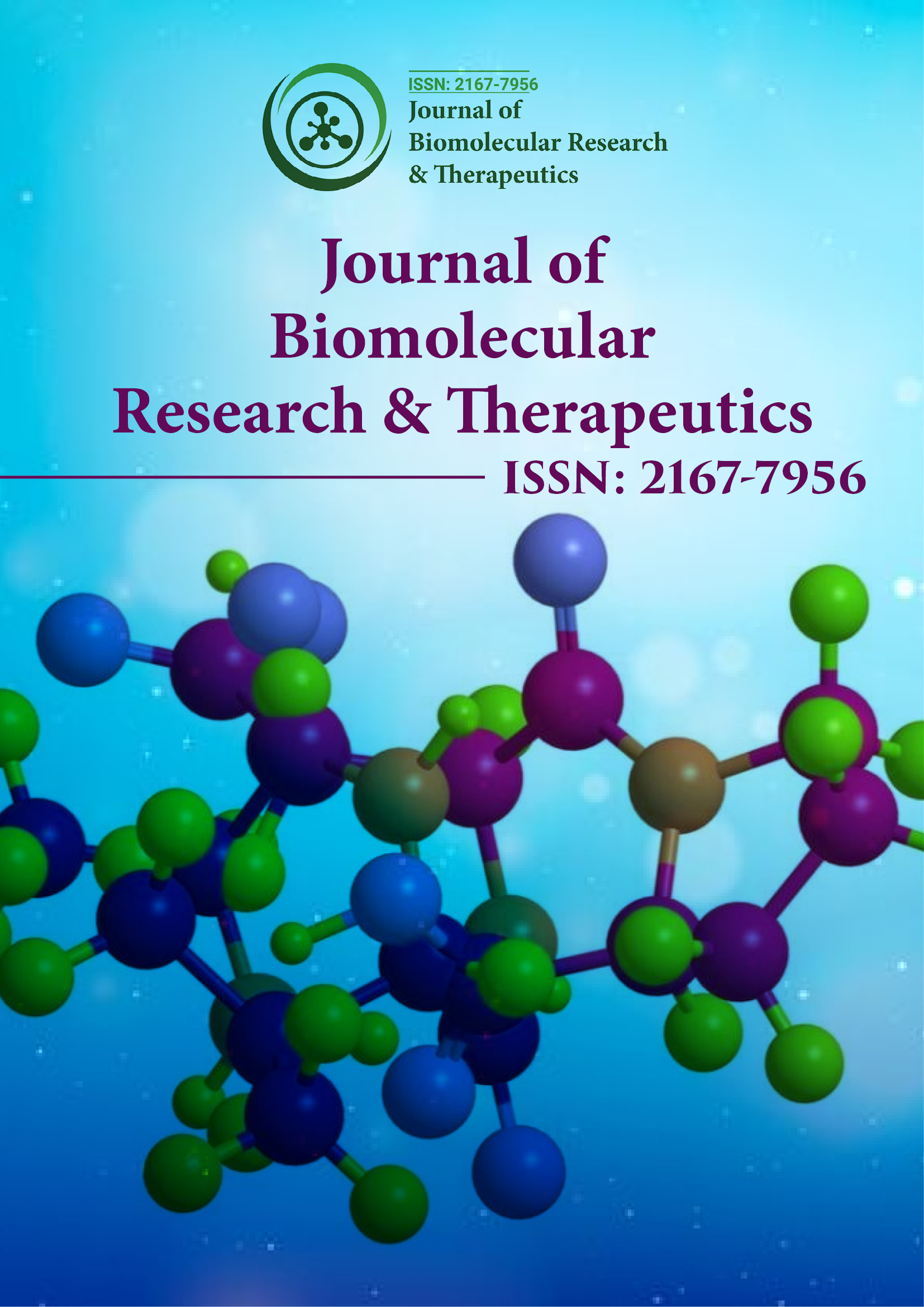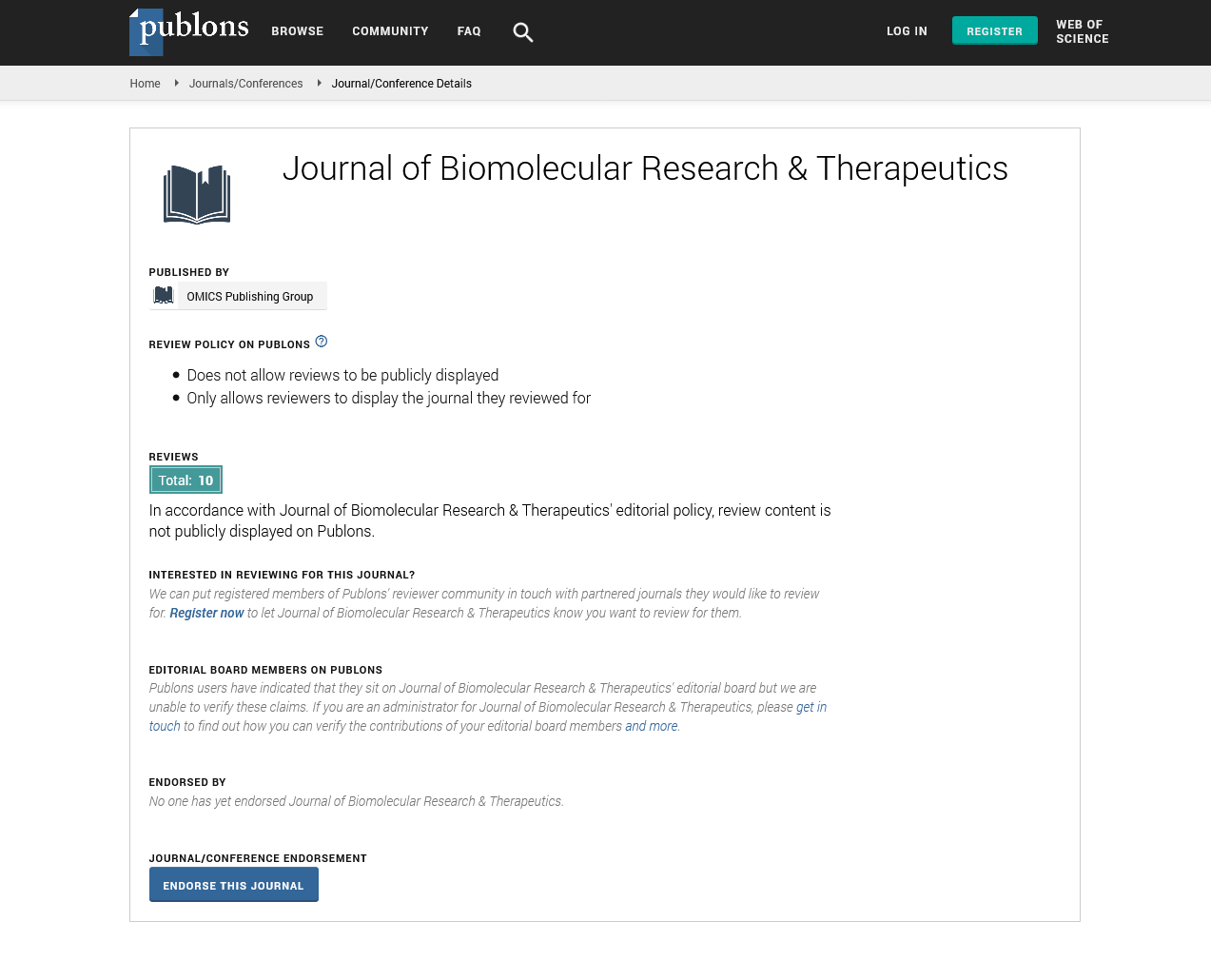Indexed In
- Open J Gate
- Genamics JournalSeek
- ResearchBible
- Electronic Journals Library
- RefSeek
- Hamdard University
- EBSCO A-Z
- OCLC- WorldCat
- SWB online catalog
- Virtual Library of Biology (vifabio)
- Publons
- Euro Pub
- Google Scholar
Useful Links
Share This Page
Journal Flyer

Open Access Journals
- Agri and Aquaculture
- Biochemistry
- Bioinformatics & Systems Biology
- Business & Management
- Chemistry
- Clinical Sciences
- Engineering
- Food & Nutrition
- General Science
- Genetics & Molecular Biology
- Immunology & Microbiology
- Medical Sciences
- Neuroscience & Psychology
- Nursing & Health Care
- Pharmaceutical Sciences
Commentary - (2024) Volume 13, Issue 5
Innovations in Drug Discovery: The Role of Biomolecular Display Technology
Haruki Nishigaki*Received: 30-Sep-2024, Manuscript No. BOM-24-27793; Editor assigned: 02-Oct-2024, Pre QC No. BOM-24-27793 (PQ); Reviewed: 16-Oct-2024, QC No. BOM-24-27793; Revised: 23-Oct-2024, Manuscript No. BOM-24-27793 (R); Published: 30-Oct-2024, DOI: 10.35248/2167-7956.24.13.410
Description
Biomolecular display technology has emerged as a transformative tool in drug discovery, offering a powerful platform for the rapid identification, screening and optimization of potential drug candidates. By enabling the presentation of biomolecules such as peptides, proteins, antibodies and nucleic acids on the surface of microorganisms, synthetic particles, or other substrates, this technology allows researchers to assess interactions between a target and a vast array of biomolecular variants. This approach has accelerated the drug discovery process, opening up new possibilities for novel therapies for difficult-to-treat diseases.
Biomolecular display technologies operate on the principle of linking a biomolecule to a carrier molecule, which presents the biomolecule on its surface for high-throughput screening. Researchers use techniques like phage display, ribosome display, yeast display and mRNA display to rapidly identify molecules that bind to specific targets such as receptors, enzymes, or antibodies. These display systems allow for screening thousands or even millions of biomolecular variants in a single experiment. Over time, this approach has expanded beyond phage display to other systems like yeast, bacteria and mammalian cells, each with its unique advantages. Yeast display, for example, allows for more complex post-translational modifications important for certain proteins, while bacterial systems are ideal for creating large peptide libraries. These advancements enable the rapid testing of different biomolecules for their affinity to a target, saving time and resources.
The concept of biomolecular display dates back to the 1980s, with the use of bacteriophages (viruses that infect bacteria) as a platform for displaying peptides. In phage display, a gene encoding a peptide is inserted into the bacteriophage genome, causing the peptide to be displayed on the virus’s surface. This displayed peptide is then exposed to a target protein and those that bind to the target can be selected for further study. Phage display has become a widely used method in drug discovery, especially for finding therapeutic antibodies. Over time, the technology was adapted to other systems such as yeast, bacteria and mammalian cells, enabling researchers to present more complex biomolecules.
In drug discovery, biomolecular display technology plays a critical role in identifying molecules that specifically interact with disease-causing proteins or receptors. For example, monoclonal antibodies, which have become key therapeutics for diseases like cancer and autoimmune disorders, are frequently identified through phage display. By presenting antibody fragments on the surface of phages and exposing them to antigens, researchers can identify antibodies that bind tightly to a target. Once identified, these antibodies can be further developed into drugs. Biomolecular display systems also facilitate the identification of small molecule inhibitors, which are important in drug discovery due to their ability to penetrate cells and lower production costs compared to biologics. By screening libraries of small molecules using display systems, researchers can identify compounds that bind to and inhibit a specific protein target, streamlining the search for new drugs.
In conclusion, biomolecular display technology has revolutionized drug discovery, offering a fast and efficient method for identifying, screening and optimizing potential drug candidates. By presenting large libraries of biomolecules for high-throughput screening, this technology accelerates the process of finding novel therapeutics. Whether for small molecule inhibitors, therapeutic antibodies, or protein-protein interactions, biomolecular display technology has become a powerful tool in the search for new drugs. As the technology continues to evolve, its potential to address complex diseases and improve patient outcomes will expand, paving the way for more effective and personalized treatments. With its ability to streamline the drug discovery process, biomolecular display technology will continue to shape the future of medicine, making the development of life-saving therapies more efficient and accessible.
Citation: Nishigaki H (2024). Innovations in Drug Discovery: The Role of Biomolecular Display Technology. J Biomol Res Ther. 13:410.
Copyright: © 2024 Nishigaki H. This is an open-access article distributed under the terms of the Creative Commons Attribution License, which permits unrestricted use, distribution, and reproduction in any medium, provided the original author and source are credited.

